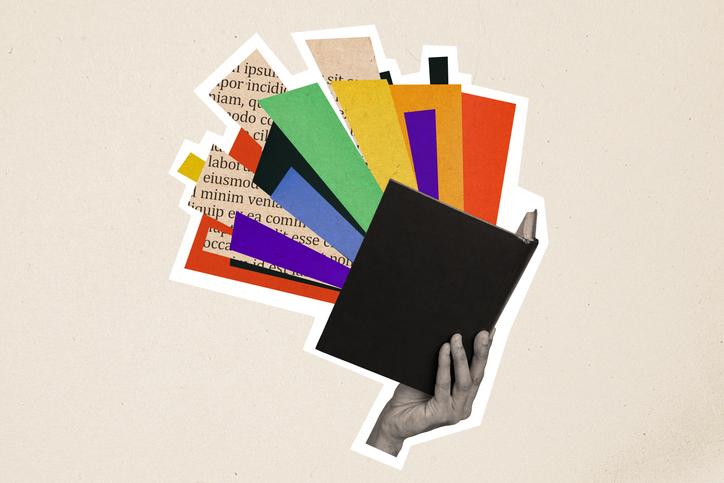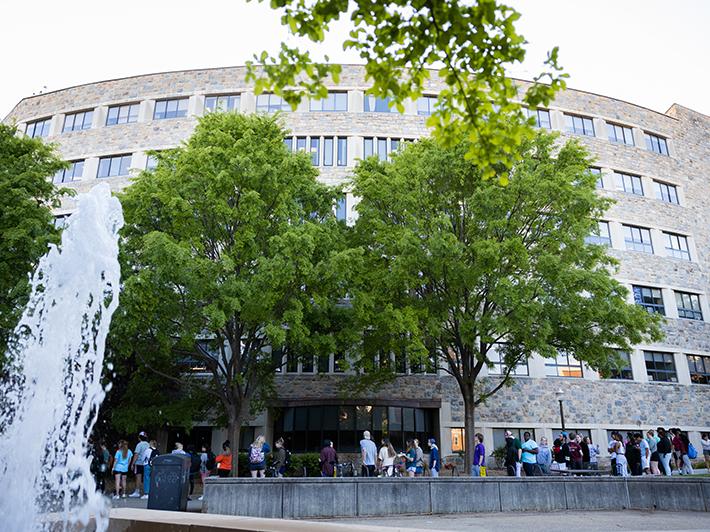Libraries typically have a reputation for being silent spaces, enabling focused personal inquiry rather than facilitating something more expressive. In reality, they are overflowing with creative activity and collaborative innovation. The RCA Library Residency was conceived to highlight the innate creativity of the college community and under-represented groups within it. It demonstrates the continuing role of libraries as proactive, engaging and inspiring venues for connection, artistry and research.
The residency was designed to challenge how a library is seen and used. Instead of keeping artistic practice separate in the studio, we invite the resident to activate overlooked corners of the library as inspiration. The displays from the residency have appeared in the entrance window, the mezzanine cabinets and the journals room, with each space encouraging a different kind of encounter. Some interventions are highly visible and on public display, while others are more subtle; tucked away inside cabinets or even hidden in the pages of a book.
- Librarians, it’s time to lead the way
- ‘Our strength lies in our small size’: how to offer more as a small, specialist academic library
- How to develop your own university library excellence standard
This play with scale has become one of the residency’s distinctive qualities. A large installation in the window can transform the library into a gallery for everyone entering the campus, while something as modest as a printed bookplate slipped between pages creates a quiet trace for future readers to stumble across. Staff describe these gestures as a way of ensuring the residency doesn’t just exist for the six-month duration but leaves a more permanent mark within the collection itself. In this way, the library becomes both a site of exhibition and a place where artworks are absorbed back into its archive.
If the library spaces themselves have been approached in unexpected ways, so too have the people invited to inhabit and interpret them. Rather than issuing a formal open call, residents have often been chosen through organic conversations and serendipitous encounters at college events. This informality allows the team to seek out voices that bring fresh perspectives to the library.
While the library looks for people who are engaged with the space, not every resident comes with a bookish background. One artist, technical instructor Beth Malcolm, admitted she hadn’t learned to read until she was 11, making her relationship to the library strikingly different from the usual associations of scholarship. Malcolm’s residency explored the symbolic and physiological form of the ear and what it represents. The work she produced included a mix of wax and plaster sculptures of ears, highlighting the beauty, form and function of the organ, which sat alongside selections from the library collection about anatomy, form, silence and space.
Another resident was drawn less to the books themselves than to the library’s acoustics, excited by how the sound of study reverberated through its walls. In his ongoing residency, associate lecturer Soritis Gonis considers the notion of trace: “The poetics of mark-making, the significance of its impact on our livelihood and memory, as well as the melancholy of the one that once was or has never been.”
Residencies are rarely straightforward, and the process relies on close collaboration between artist and facilitators. Here, the library team balances respect for an artist’s vision with the practicalities of space, accessibility and preservation. Sometimes this negotiation can bring up interesting challenges, such as when one resident wanted to incorporate dripping water into their work – an idea that sparked lively discussion about what is and isn’t possible within a room full of books.
These conversations have led to inventive solutions. Residents have created QR codes linking displays to reading lists, developed zines that circulate ideas beyond the library walls and worked with the RCA PrintLab to design limited-edition bookplates inserted into the collection. Each of these gestures strengthens the dialogue between artist, staff and audience, while reminding visitors that the library can be a living, collaborative environment.
The programme has also shaped how the library team thinks about future activity. A recent example is the Guest Book project, which invites shorter interventions from students who might not have the time to commit to a full residency. In this way, the residency acts not just as a one-off initiative but as a catalyst for new avenues for participation.
By opening its doors in this way, the library has enhanced the definition of what a library can be. As well as a quiet refuge for solitary study, it becomes a place of encounter and exchange, where fresh perspectives emerge. By opening its doors in this way, the residency has revealed the potential of libraries as sites for encounter, exchange and engagement.
Darlene Maxwell is head of library services, Corinne Noble is senior library assistant for library services, and Alexandra Genova is content editor for engagement, branding and marketing, all at the Royal College of Art.
The university’s library team was shortlisted in the Outstanding Library Team of the Year category in the Times Higher Education Awards 2025. The full list of nominees can be found here.
If you would like advice and insight from academics and university staff delivered direct to your inbox each week, sign up for the Campus newsletter.




comment